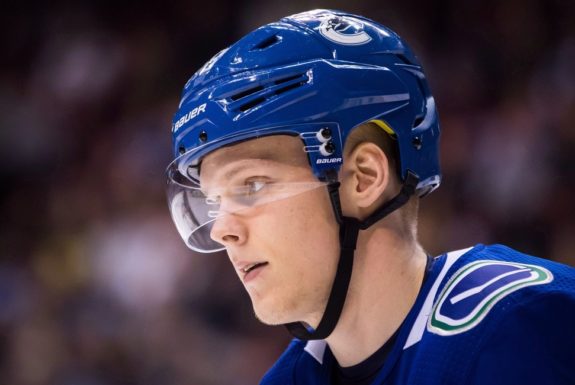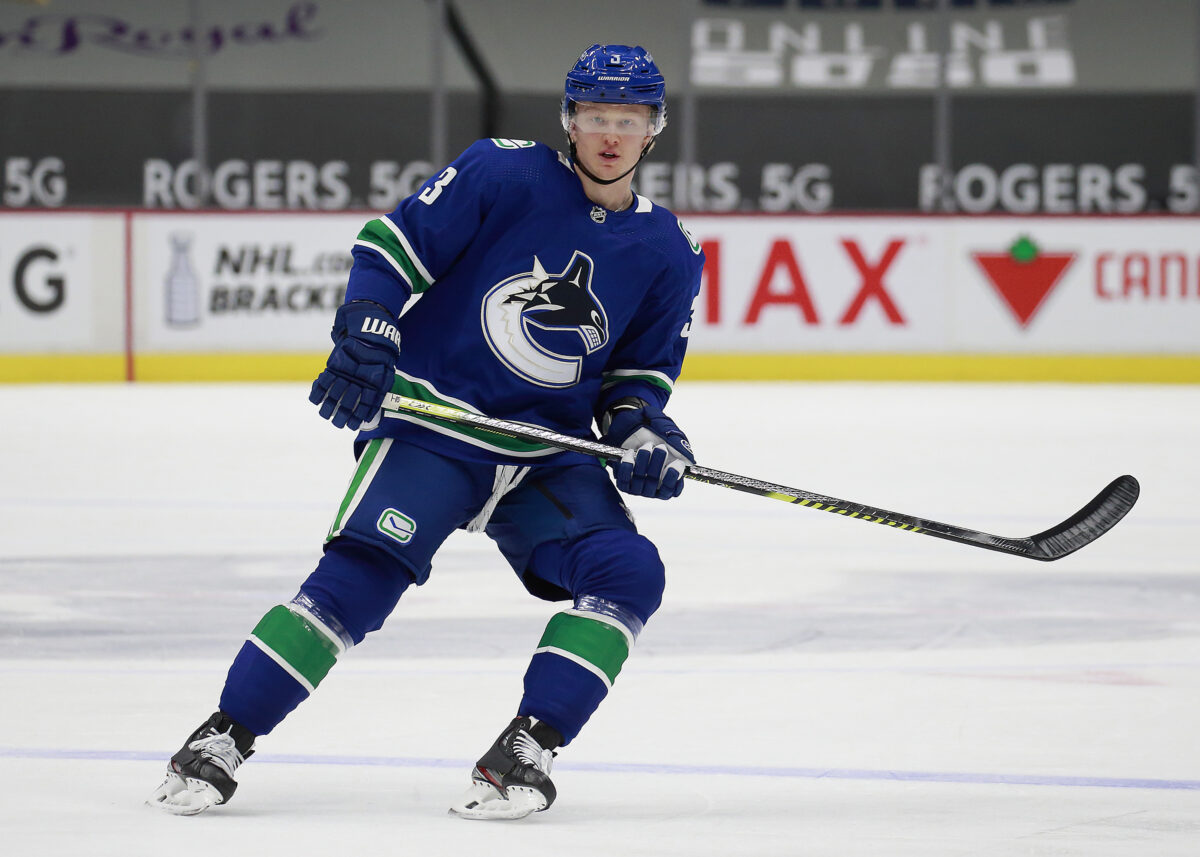The Vancouver Canucks will have to make some tough decisions before the 2021-22 season begins. One of those is who will play on the left side of the third defensive pair. The two players who will be fighting for that spot are Olli Juolevi and Jack Rathbone. This article will compare each player to try and determine who may be the best fit for that third pair spot.
Defensive Play
Despite the small sample size, it is evident that Rathbone had better results defensively at even strength. He had a higher Corsi for %, shots for, and hits per game. As for plus/minus, Juolevi posted a minus-1 rating this season while Rathbone had a plus-6. The one area where Juolevi has the edge is that he plays penalty kill while Rathbone does not.

When comparing a player’s defensive play, it is important to look at their partner and the opponents they faced. Both played predominantly with Tyler Myers, so it makes the data easier to compare. Next, the opponents they faced. While Juolevi did play more games, 13 of his 23 games came against non-playoff opponents. Of Rathbone’s eight games, only two were played against teams who failed to make the playoffs.

There is also the quality of competition in those games. For example, during Rathbone’s four games versus the Oilers, he played 5:04 versus McDavid at even strength. Juolevi also played four games versus Edmonton’s only matchup against McDavid for 3:33. The one positive for Juolevi is he did perform better against McDavid, allowing zero shots while he was defending the league MVP.
The most important part is that head coach Travis Green trusts Rathbone more and has given him tougher minutes. As for Juolevi, he has been stuck playing against the third and fourth lines of teams. Although he has only played eight games, Rathbone has shown to be a stronger defender than Juolvei when playing at even strength.
Offensive Ability
To be successful as a team, you need your defenceman to provide some offense. The Canucks need someone besides Quinn Hughes to step up on the left side and produce some offense. The addition of Oliver Ekman-Larsson should help, but with him expected to be a shutdown defender this season, that third pair will be relied upon heavily to produce. While both players can create chances from the blueline, one really separated himself from the competition.
Rathbone created more chances per game, generated more shots on the net, and had a higher individual points percentage than Juolevi at five on five. He even got more power-play time and was given a chance to play with Hughes on the team’s first power-play unit. Green does not just give players power-play time – they have to earn it. He sees Rathbone’s potential, which should play a role in who gets the final defense spot next season.
Game to Game Perfomance
This is the most telling and a big reason that many believe Rathbone has the edge over Juolevi. When comparing time on ice, Rathbone’s continued to increase while Juolevi’s decreased throughout the season. There was also a long stretch of time when Green decided to bench Juolevi despite the team being tired near the end of the season and recovering from their COVID-19 outbreak.
As for Rathbone, he only came out of the lineup twice after making his debut. The team also had a .500% winning percentage compared to Juolevi’s .260%. As mentioned, his ice time continued to climb. He played 12:04 in game one and finished game eight playing 21:17. The coach clearly has confidence in his overall game and continues to lean on him to produce.
Then there is Juolevi. He only eclipsed 15 minutes three times and had a season-low of 7:55. Even after the Canucks were eliminated, coach Green didn’t play him a lot as he played 12:23 in his final game of the season. Obviously, the coach does not have faith in his game, which will be a major factor in how many games he plays next season.
Final Verdict
It is clear that Rathbone is the best option; however, splitting that last spot between the two may be the best option. Before this season, the most games Rathbone has played is 33. We do not know how he is going to hold up over an 82 game schedule with travel. That is why you split their playtime as you do with goalies. One plays 50-55 games and the other jumps in for the remaining 27-32. This way, that third defensive pair stays fresh, and you throw off the other team’s game plan. It will be an intense battle as both players will push for that final spot—one of many battles that should occur when training camp opens in late September.
